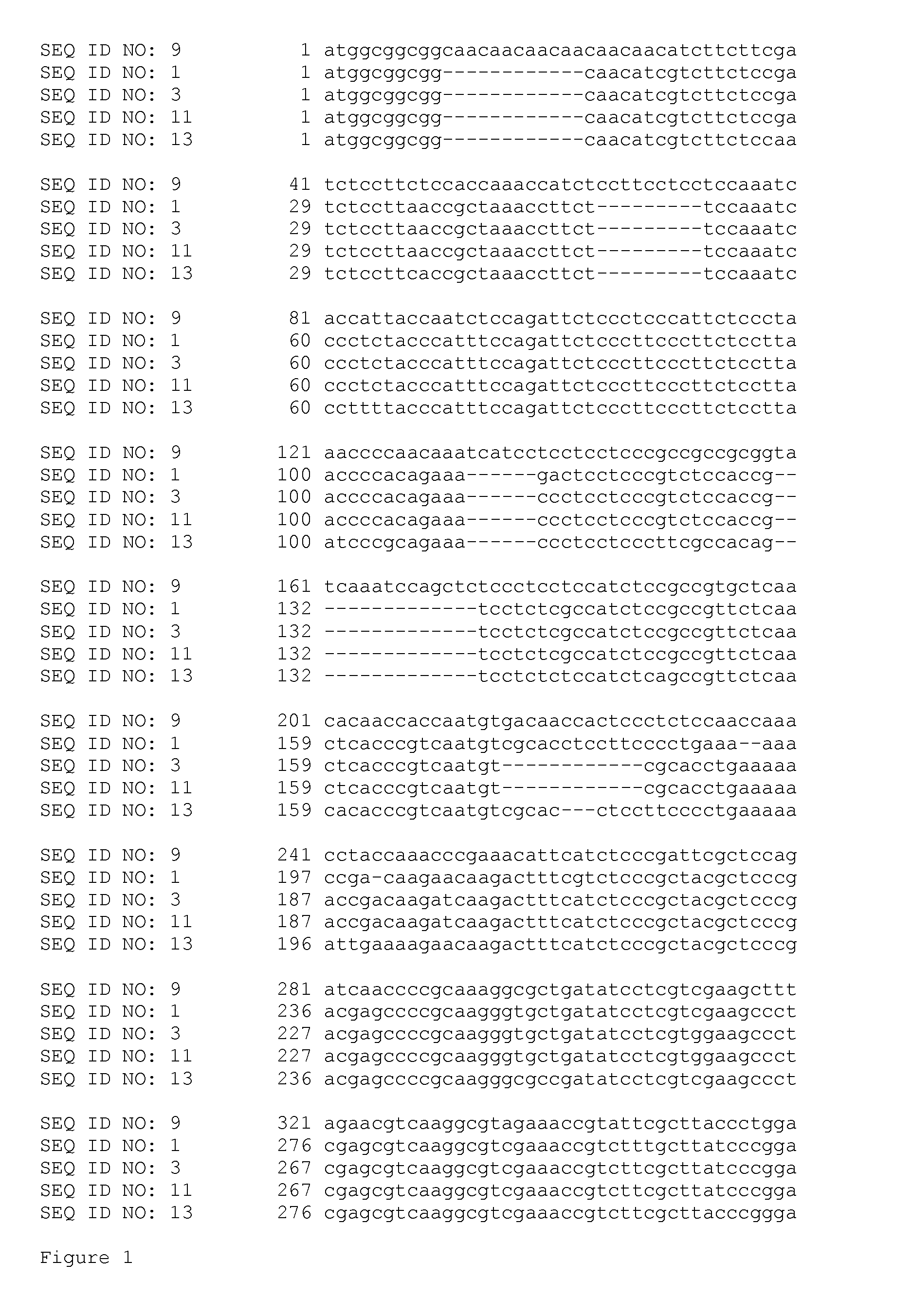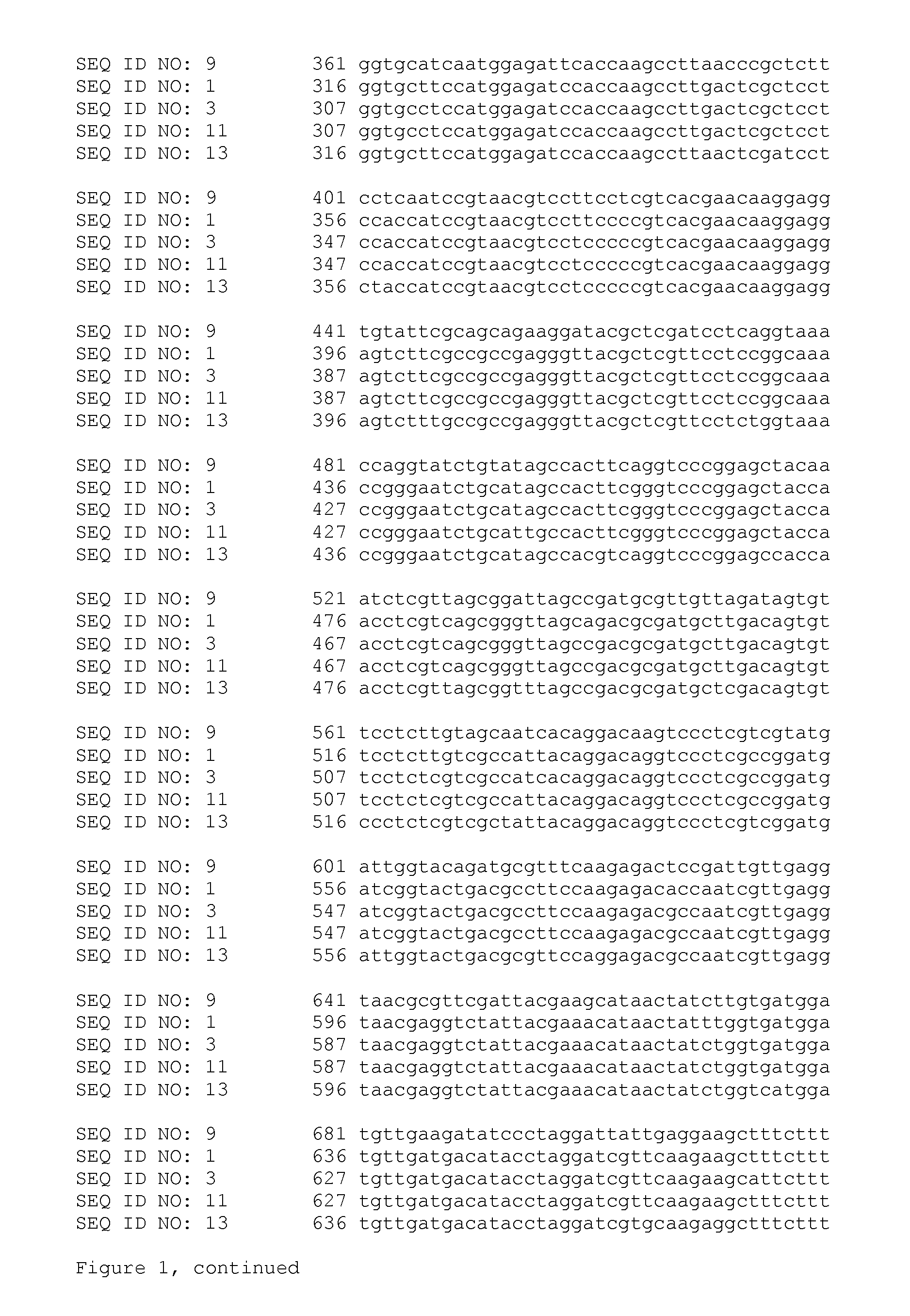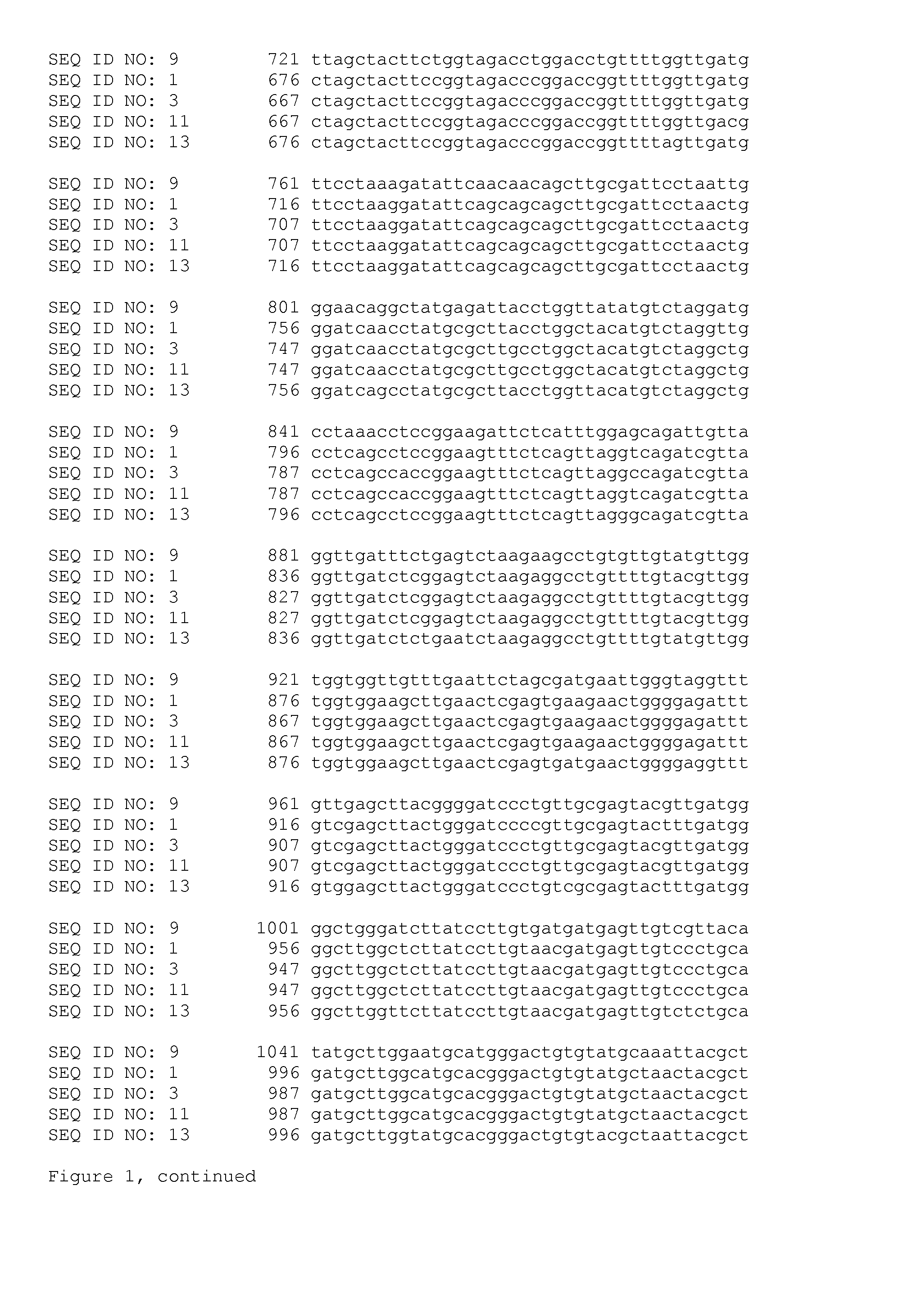Als inhibitor herbicide tolerant mutant plants
a mutant plant and als inhibitor technology, applied in the introduction of vector-based foreign material, plant/algae/fungi/lichens ingredients, depsipeptides, etc., can solve the problems of plant death and plant growth loss, and achieve the effect of increasing the tolerance to als inhibitor herbicid
- Summary
- Abstract
- Description
- Claims
- Application Information
AI Technical Summary
Benefits of technology
Problems solved by technology
Method used
Image
Examples
example 1
Generation and Isolation of Mutant Brassica AHAS Alleles
[0426]Brassica napus lines with the HETO134 mutation, i.e. comprising a G to T substitution at position 1676 of ALS I, resulting in a Tryptophan to Leucine amino acid substitution at position 559 of the encoded protein, and Brassica napus lines with the HETO133 mutation, i.e. comprising a G to T substitution at position 1667 of ALS III, resulting in a Tryptophan to Leucine amino acid substitution at position 556 of the encoded protein, were generated as follows.
Seedling Germination and Callus Induction
[0427]Aliquots of seeds were sterilized by rinsing for 1 min in 70% ethanol followed by 15 minutes agitation in bleach (6% active chlorine dilution). After 3 washes in sterile water the seeds were sown on 5 cm Petri plates containing 5 ml of M-205 germination medium (25 seeds per plate). M-205 medium is half strength MS macro and micro salts (Murashige and Skoog, 1962), half strength B5 vitamins (Gamborg et al. 1968) containing 10...
example 2
Combination of HETO133 and HETO134 Alleles
[0433]Heterozygous Brassica plants comprising HETO133 have been crossed with heterozygous Brassica plants comprising HETO134. The F1 plants have been selfed to obtain the following genotypes:
ALS IALS III— / —— / —— / —HETO133 / —— / —HETO133 / HETO133HETO134 / —— / —HETO134 / —HETO133 / —HETO134 / —HETO133 / HETO133HETO134 / HETO134— / —HETO134 / HETO134HETO133 / —HETO134 / HETO134HETO133 / HETO133
wherein—indicates the wild-type allele for ALS I and ALS III.
[0434]Seeds comprising HETO133 and HETO134 have been deposited at the NCIMB Limited (Ferguson Building, Craibstone Estate, Bucksburn, Aberdeen, Scotland, AB21 9YA, UK) on May 20, 2013, under accession number NCIMB 42145. Of the deposited seeds, 25% is homozygous for the HETO133 mutation and 50% is heterozygous for the HETO133 mutation, and 25% is homozygous for the HETO134 mutation and 50% is heterozygous for the HETO134 mutation, which can be identified using methods as described elsewhere in this application. Seeds homozy...
example 3
Measurement of Herbicide Tolerance of Brassica Plants Comprising Mutant AHAS Alleles
[0435]The correlation between the presence of mutant AHAS alleles in a Brassica plant grown in the greenhouse and tolerance to thiencarbazone-methyl and foramsulfuron was determined as follows. Treatment post-emergence at the 1-2 leaf stage was carried out in a spray cabinet with a dose of 5 g a.i. / ha of thiencarbazone-methyl and 8.75 g a.i. / ha of foramsulfuron. The plants were evaluated for phenotype (height, side branching and leave morphology) on scale of 5 to 1, where; type 5=normal (corresponding to wildtype unsprayed phenotype); type 4=normal height, some side branching, normal leaves; type 3=intermediate height, intermediate side branching, normal leaves; type 2=short, severe side branching (“bushy”), some leave malformations; type 1=short, severe side branching (“bushy”), severe leave malformations. For assessment of vigor scores, plants were evaluated on a scale of 1 to 9, where 1=very poor ...
PUM
| Property | Measurement | Unit |
|---|---|---|
| pH | aaaaa | aaaaa |
| temperature | aaaaa | aaaaa |
| temperature | aaaaa | aaaaa |
Abstract
Description
Claims
Application Information
 Login to View More
Login to View More - R&D
- Intellectual Property
- Life Sciences
- Materials
- Tech Scout
- Unparalleled Data Quality
- Higher Quality Content
- 60% Fewer Hallucinations
Browse by: Latest US Patents, China's latest patents, Technical Efficacy Thesaurus, Application Domain, Technology Topic, Popular Technical Reports.
© 2025 PatSnap. All rights reserved.Legal|Privacy policy|Modern Slavery Act Transparency Statement|Sitemap|About US| Contact US: help@patsnap.com



